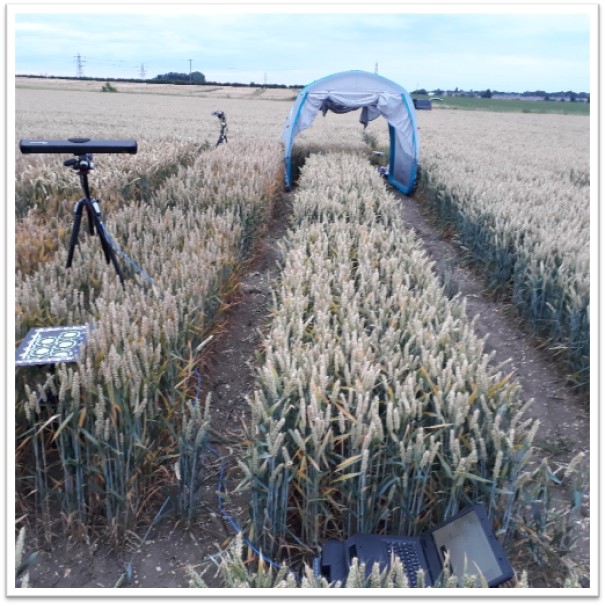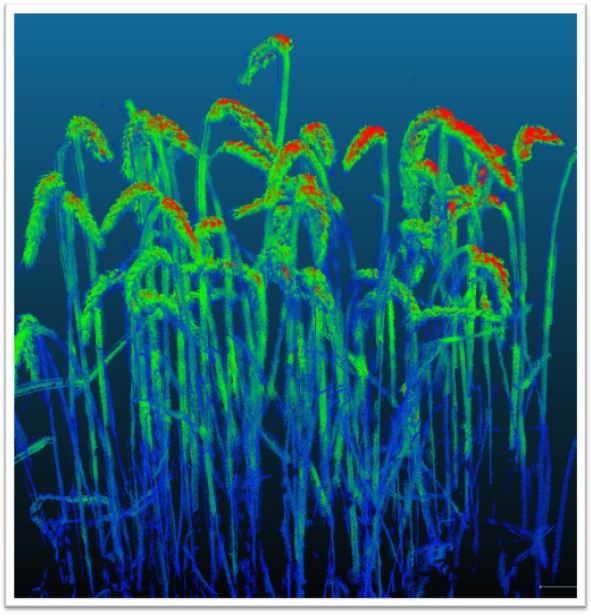 The challenge
The challengeNPL is employing cameras, sensors and image processing to analyse crops. This work, with NIAB (National Institute of Agricultural Botany) as a partner, aims to improve the quality and efficiency of crop production in the UK. NPL has developed a vehicle that can be driven into a field in order to image the crops and extract information on the observable and measurable characteristics of the crops, known as phenotyping.
This automated approach has the potential to replace the current standard practice of manual measurements. It has the advantage of increasing the area surveyed and providing more objective and systematic data on the expected yield and crop quality. However, the quantity of data produced from the 3D imaging is massive and requires careful analysis and processing to produce meaningful information.
 NPL has been working on 3D point cloud images from laser scans of dense wheat crops, and algorithms have been produced which identify spikes (or ears) of wheat from the data and estimate the dimensions of each spike and the total yield. Extracting information from 3D images relies upon algorithms, which NPL has designed and coded up so that they can segment the individual crops, identify the wheat spikes and, finally, estimate the dimensions of each spike and the total yield.
NPL has been working on 3D point cloud images from laser scans of dense wheat crops, and algorithms have been produced which identify spikes (or ears) of wheat from the data and estimate the dimensions of each spike and the total yield. Extracting information from 3D images relies upon algorithms, which NPL has designed and coded up so that they can segment the individual crops, identify the wheat spikes and, finally, estimate the dimensions of each spike and the total yield.
These algorithms combine clustering and data fitting methods in novel ways and have been incorporated into a software demonstrator which has been shown to potential customers.
The algorithms are now being further improved using machine learning. This means that rather than working from models based on experience and intuition, a deep neural network learns a data-driven model for identifying wheat spikes. This approach is likely to be more flexible and to be particularly useful for complex data sets.
Improving the quality and efficiency of crop production will directly impact the quality of life and prosperity of the general population. NPL’s innovations in high-throughput phenotyping are now in a position to be taken up by agricultural research institutions, and eventually by agronomists and farmers. The techniques they have developed could also be applied to crops other than wheat.
The techniques and algorithms developed for precision agriculture are also applicable to other situations which involve multiple, complex measurements and user expertise, such as medical imaging.